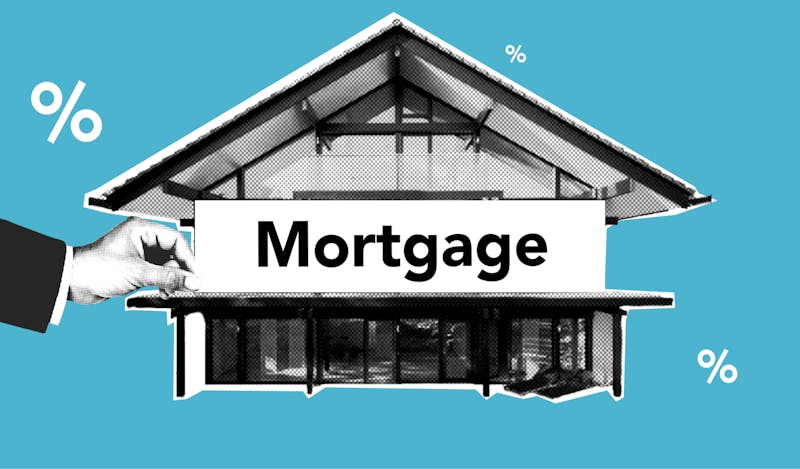Flexibility and financial stability are becoming more and more crucial as Canadians age. Reverse mortgages have become a viable option for homeowners over 55, providing them with access to a part of their equity without having to sell their house.
But are you a good fit for a reverse mortgage? To assist you in making an educated choice, this blog will go over the specifics of reverse mortgages in Canada.
What is a Reverse Mortgage?
Before we explore how reverse mortgages work in Canada, let’s understand what a reverse mortgage is in Canada. Homeowners who are typically 55 years of age or older can apply for a reverse mortgage. It enables you to take out a loan against the equity in your house without having to sell it. To do this, you can turn a portion of the equity in your house into tax-free cash. Institutions of finance refer to this as “equity release” at times.
Typically, you can borrow up to 55% of your home’s current value. Your eligibility for Old Age Security (OAS) or the Guaranteed Income Supplement (GIS) is unaffected by this amount.
Your maximum loan amount is determined by your age and the ages of other people listed on the title of your property, as well as the kind, condition, and estimated worth of your home by your lender.
The house you’re utilizing to obtain a reverse mortgage often has to be your principal residence for you to qualify. This usually indicates that you spend at least six months a year residing in the house.
How Does a Reverse Mortgage Work in Canada?
Here’s a step-by-step look at the process:
- Eligibility: To qualify, all titleholders must be at least 55 years old and the property must be the primary residence.
- Loan Amount: The amount you can borrow typically ranges from 25% to 55% of the home’s appraised value. The specific amount increases with the borrower’s age and the property’s value.
- Repayment: No monthly payments are required as long as at least one borrower lives in the home. The loan becomes due when the last homeowner moves out, sells the home, or passes away.
- Interest Rates: These loans usually have higher interest rates than traditional mortgages because the lender does not receive payments until the home is sold or the homeowner dies.
Proceeds Use: The cash obtained can be used for anything from covering living expenses and funding home renovations to paying for healthcare.
Paying back your reverse mortgage
With a reverse mortgage, there are no monthly payments required. Generally, you have a limit on the amount that you may pay your lender. Additionally, you often have the choice to pay back the principal and interest in full whenever you want.
There can be a cost if you pay off your reverse mortgage early. The length of the payback period is governed by the terms of your loan arrangement. Find out from your lender what costs would apply if you paid off your reverse mortgage early.
The balance must be repaid under the following circumstances:
- when you sell your home,
- if you move out of your home,
- upon the death of the last borrower,
if you default on the terms of the reverse mortgage.
Typically, you and your estate have a set amount of time to repay the reverse mortgage. Regarding the timeline for repaying the reverse mortgage, lenders set their own rules. They also decide what will happen if you or your estate neglects to make the required payments on time.
Make sure you inquire with your lender about the terms and conditions associated with repaying a reverse mortgage and mortgage basics.
Benefits and Considerations
If you are wondering “Are reverse mortgages a good idea in Canada?”, Make sure to thoroughly analyze both the benefits and the considerations before making a decision, especially if you are new to Canada.
Benefits:
- Provides financial flexibility in retirement without the need to move.
- Taxes are not paid on the money you borrow.
- There can be choices for you regarding when and how you get the money.
- Allows homeowners to stay in their homes and access equity.
Considerations:
- Interest compounds throughout the loan, which can significantly increase the amount owed over time.
- The remaining equity in the home (after the reverse mortgage is paid off) can be substantially less, affecting inheritance for heirs.
- The time required to settle an estate may exceed the time allotted for repaying a reverse mortgage.
- When you pass away, your estate can be required to pay back the reverse mortgage plus interest within a certain amount of time.
This guide has unpacked the intricacies of reverse mortgages in Canada, acting as your roadmap to navigate this financial tool and answering the question: is a reverse mortgage a good idea in Canada? Remember, it’s not a one-size-fits-all solution. Weigh your circumstances and goals carefully. Consulting a professional is key – a financial advisor can assess your needs and determine if a reverse mortgage aligns with your long-term plans, while also comparing it to other guide to mortgage options available to you in Canada, like traditional refinances or HELOCs.
Through a clear explanation of the benefits and drawbacks of reverse mortgages in Canada, you will be equipped to make an informed choice about accessing your home equity. This information is essential for examining all of your financial alternatives and planning for a safe and cozy retirement in your own house.



